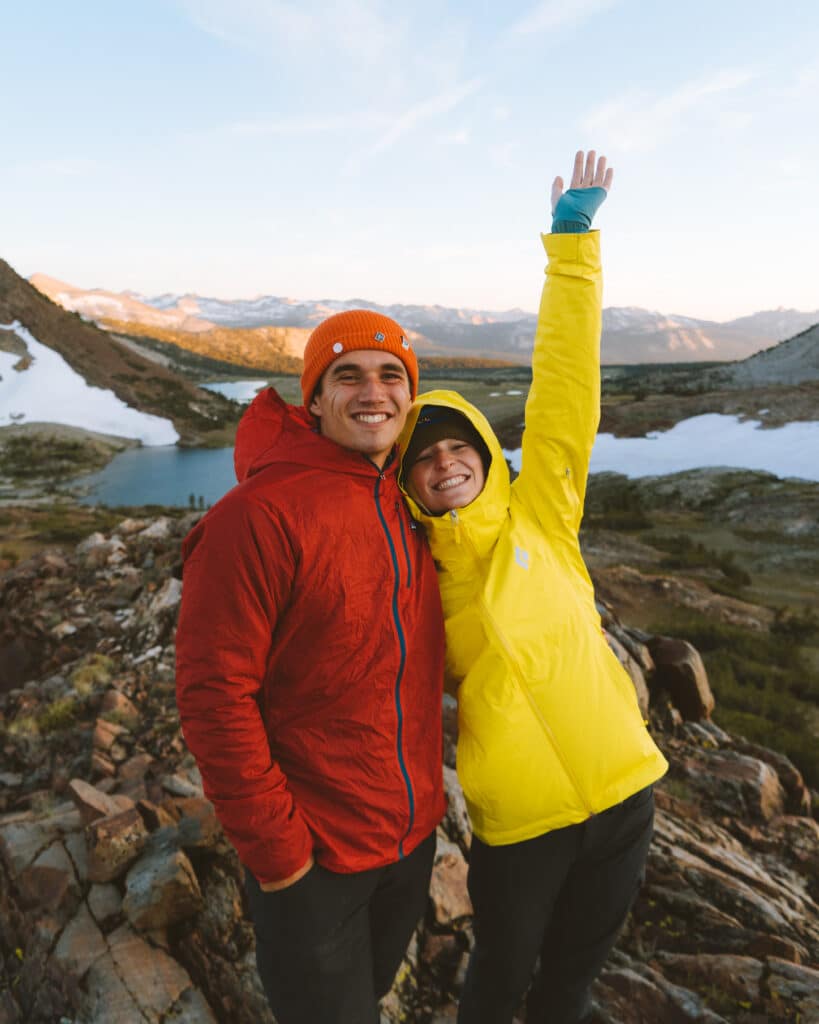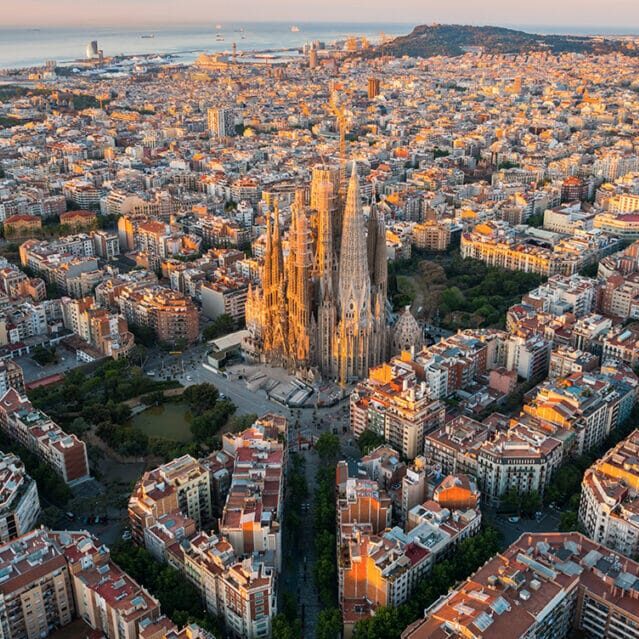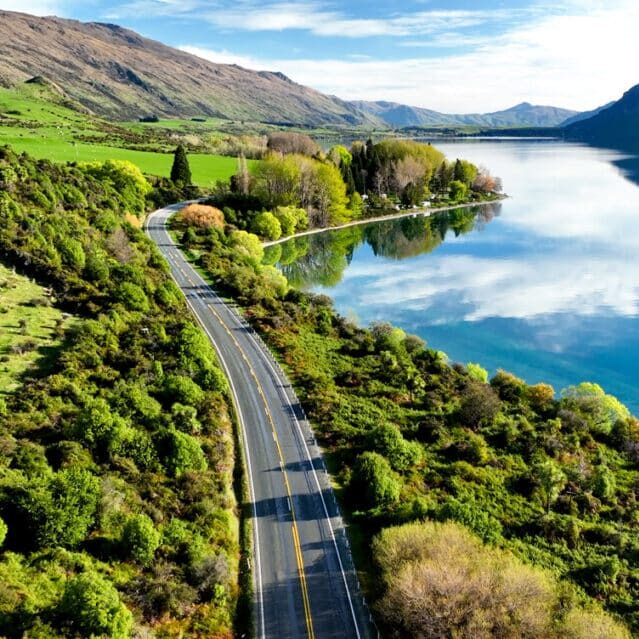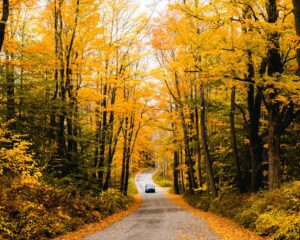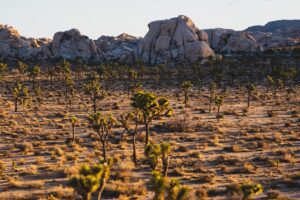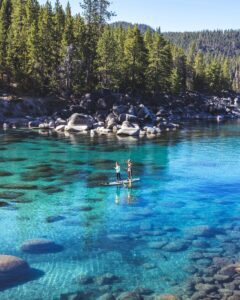[Guide] What Are the Best Waterfalls to Visit in Iceland?
Disclaimer: This post may contain affiliate links. Please see our Disclosure Policy and Advertiser Disclosure for details.
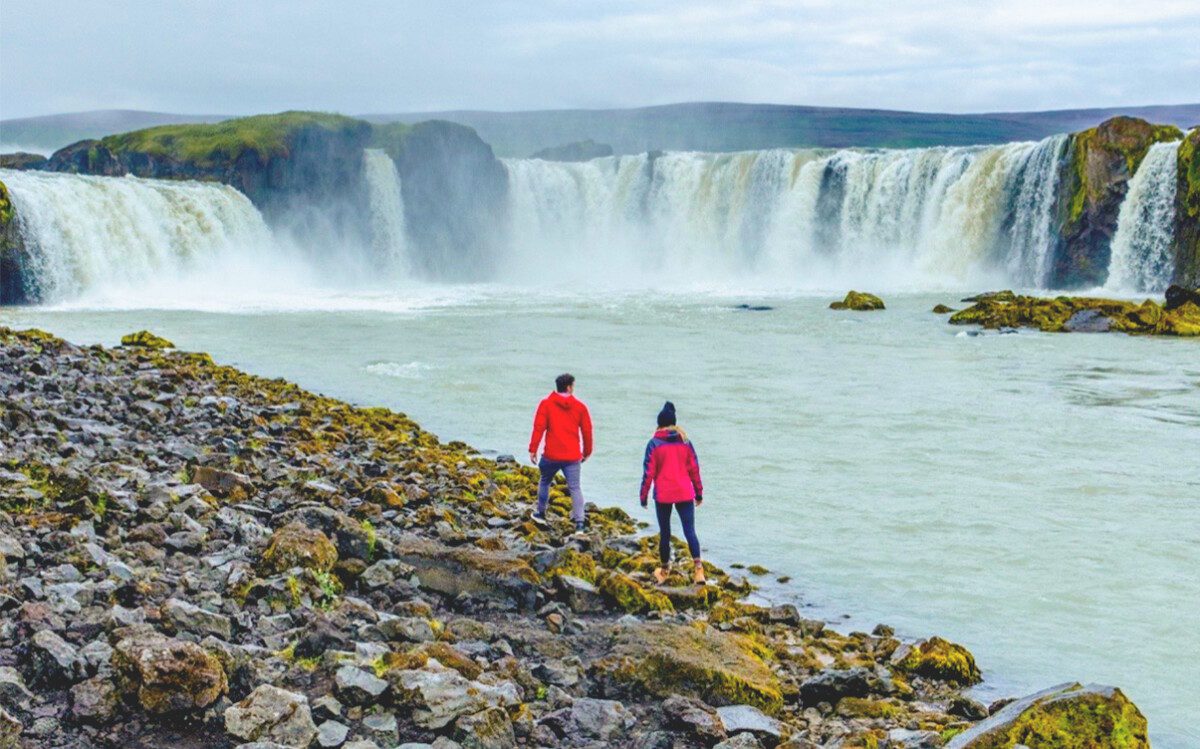
Iceland is a country full of fierce natural beauty, from the stunning glacial vistas to the hot springs to the unique geological features that make it such a distinct landscape.
Standing above the rest, though, are the waterfalls scattered throughout the landscape.
Moreover, it seems like they’re everywhere! Some estimates say there are as many as 10,000 different waterfalls throughout Iceland.
While some of the waterfalls in Iceland are little more than some glacial runoff tipping over a cliff, others are spectacular displays of the beauty of nature. Whether you prefer the slower, more languid tranquility of a simple fall or the roaring rush of water down a steep cliff into shining pools, there’s something for everyone.
Iceland is a great place to visit for both short and long vacations. We’ve already covered what you can do if you have a mere 24 hours to spend in Reykjavik, but what if you have more time to wander and spend enjoying nature? Why not check out many of the best waterfalls around? We did, and they’re spectacular. In fact, we want you to follow in our footsteps, so we’ve put together this list of our favorite waterfalls to visit around the country.
Want to know everything you could possibly need to know about a trip to Iceland? We made a video of our experiences and pro tips as travelers, so check it out.
Skógafoss
One of the largest waterfalls in Iceland, you can walk right up to the falls, but you’ll definitely be drenched if you try. Of course, with how pure and refreshing the water is in Iceland, maybe that’s a good thing!
Skógafoss is perhaps the most famous waterfall in Iceland, which is both good and bad. It’s good because you know it’s going to be impressive, and it definitely lives up to the hype. It’s humbling to stand next to the roaring water and feel the force of nature around you.
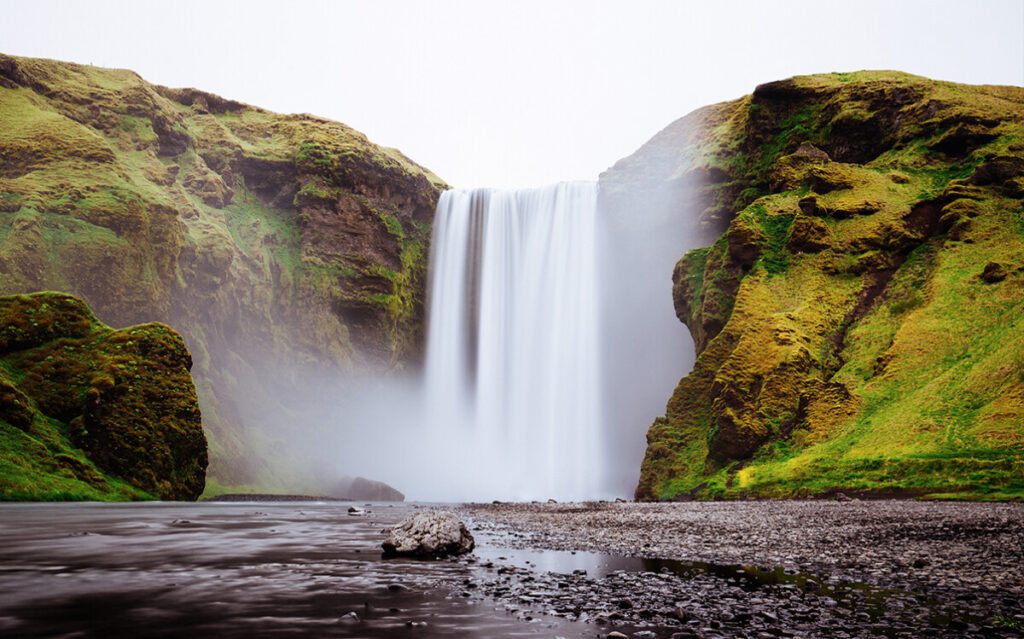
On the other hand, it’s also extremely popular. If you visit during the day, you’re likely to encounter huge crowds and full tour buses everywhere. Since it’s just under a two-hour drive from Reykjavik, it’s a very popular destination.
There’s also a legend of a treasure chest under the falls, and you can see the ring torn from the chest in the local museum.
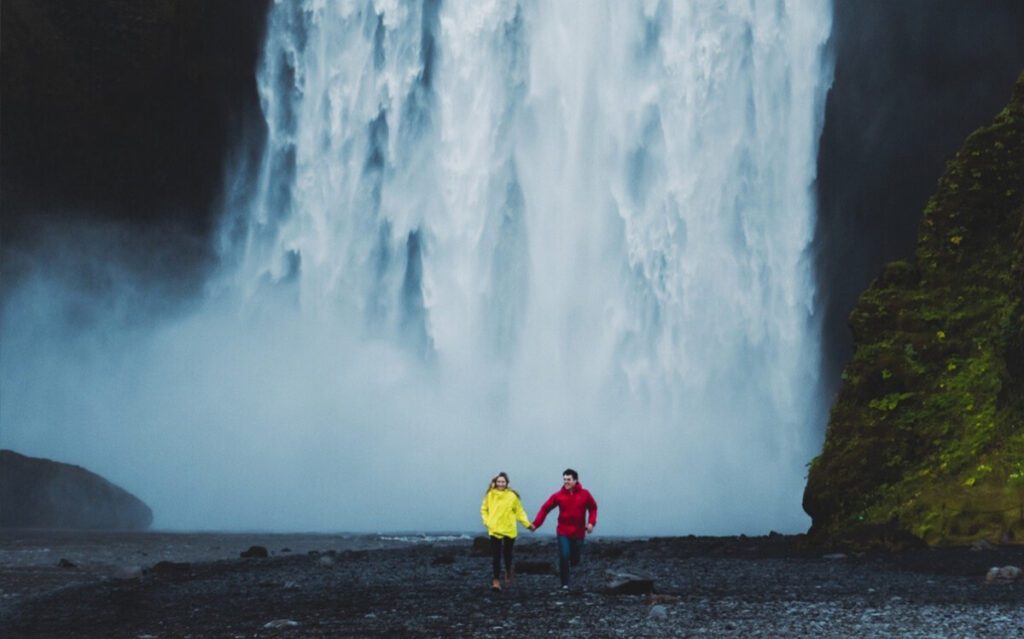
Our advice? Try to visit around sunrise and/or sunset for the best experience. If you don’t want to get up and drive before the sun rises, you can go the day before and camp out in the nearby campgrounds to see it first thing in the morning.
Seljalandsfoss
Another of the most popular waterfalls in the country, Seljalandsfoss, is a tall and narrow fall from a cliff that, in centuries past, was part of the coastline. Today, the tall cliff hangs over a natural carve-out with pathways all the way around; you can walk the entire circuit around the falls and see it from every possible angle.
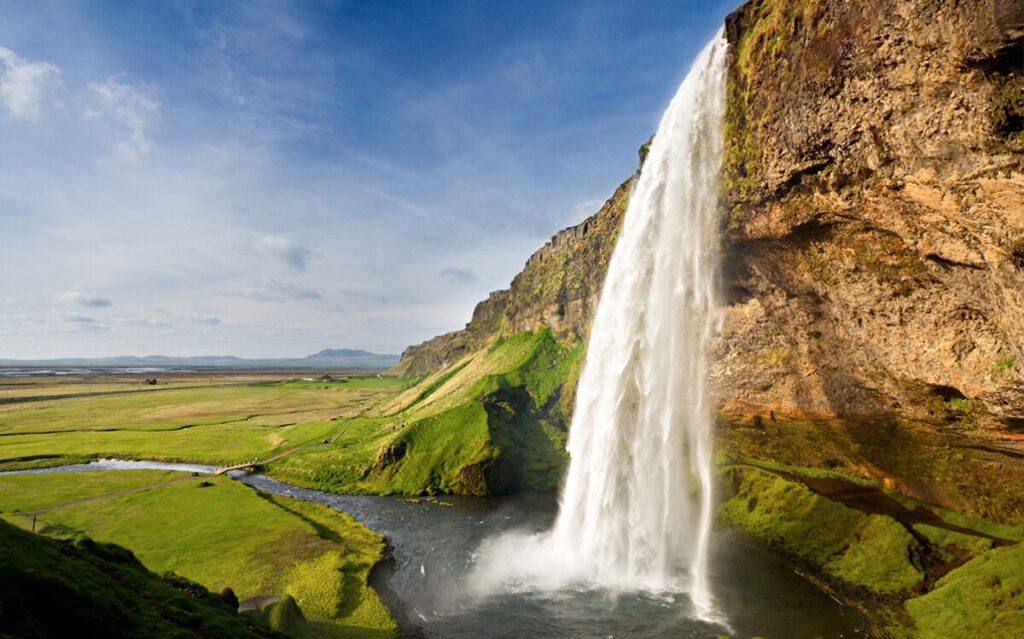
While the volume of water cascading over the cliff here isn’t nearly as much as the previous fall, it’s an incredibly beautiful sight during sunset. So much so, in fact, that the country has set up floodlights on either side of the falls to light them up at night when the midnight sun isn’t around.
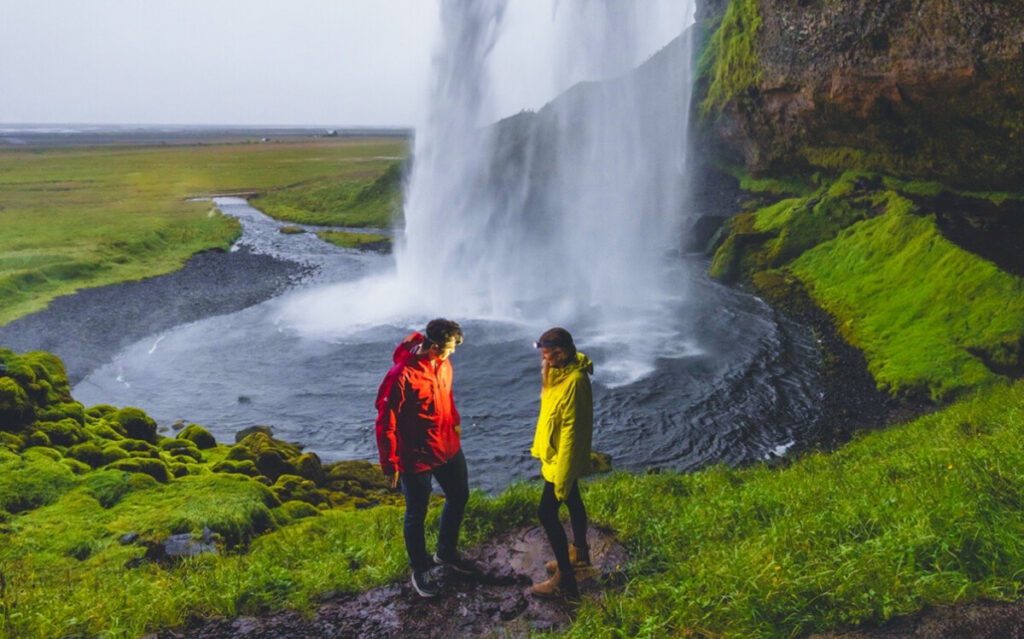
As part of a waterfall tour, you’re likely to see this fall quite soon after Skógafoss, as they’re quite close to one another. For the same reason, though, you’ll want to time your visit to avoid the worst of the crowds if you want a bit of time alone with nature.
Gljúfrabúi
Located just a short distance (under a kilometer) from Seljalandsfoss, this hidden gem of a waterfall is less populated than its more impressive counterpart, which makes it an excellent fall to take some brilliant photos and enjoy your connection with the crystal waters of Iceland. Make sure to bring your rain jacket because those same waters are definitely going to enjoy their connection with you.
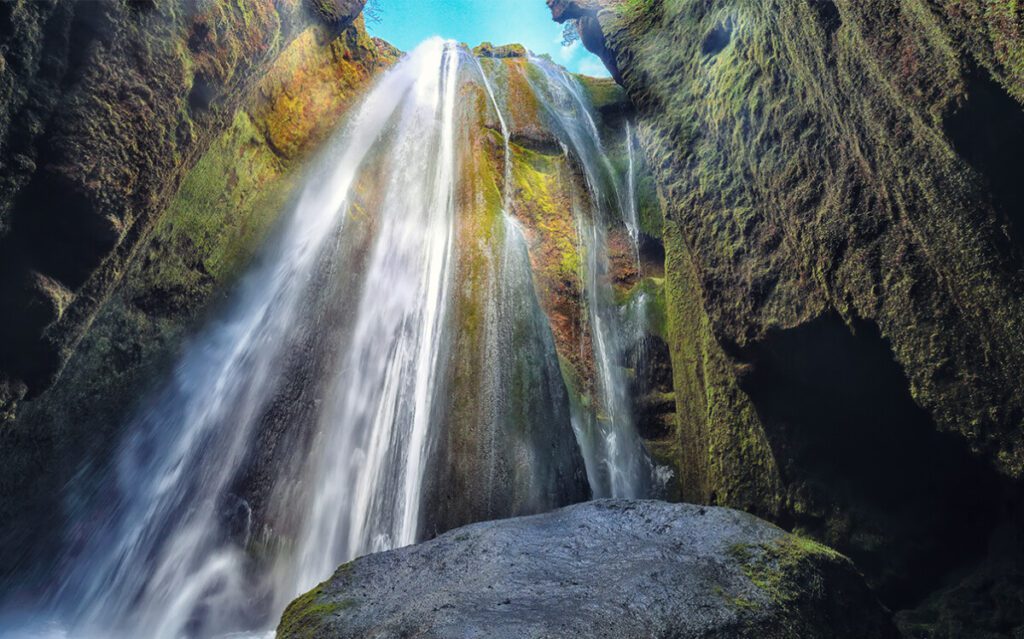
This fall truly is a hidden gem; it’s tucked away in a towering gap in the cliffs, partially hidden as you approach, so you hear it and feel it more than you see it as you draw near. Then, suddenly, there you are, face to face with the “Canyon Dweller.” After passing through the gap in the cliffs to the hidden grotto, you’ll think you’ve been transported to a magical land. And really, haven’t you? This is what a natural tour of Iceland is all about.
Kvernufoss
Kvernufoss is another smaller hidden gem of a waterfall tucked away and too often overlooked as tourists follow their guides (and the crowds) to the nearby Skógafoss.
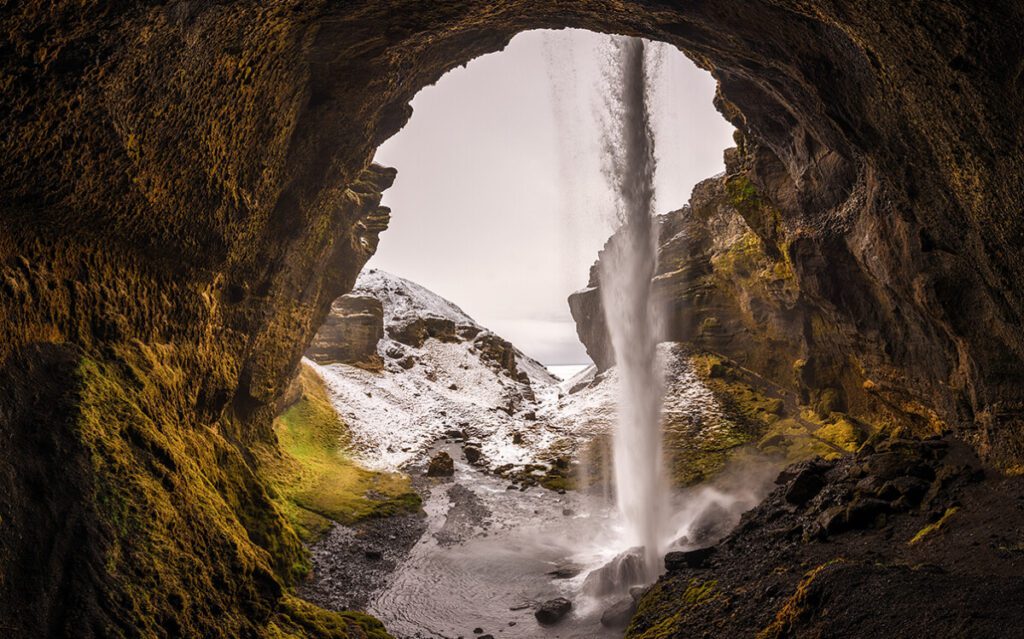
Kvernufoss is almost entirely hidden in its protected gorge but can be seen in the distance from the ring road, which is how many travelers experience it. If you’re willing to hike up to it, though, there’s a defined path with only a little gravel and a few small obstacles to traverse to reach it.
Kvernufoss is also one of the waterfalls you can walk behind, at least in the summertime, though you need to be prepared to get wet.
Fjaðrárgljúfur Canyon
This canyon was featured in a Justin Beiber music video, which is how so many people know it. It’s more popular than it used to be because of that, but it’s still a lot less crowded than something like the first couple of falls on this list, in part because it’s a bit further along the ring road away from Reykjavik.
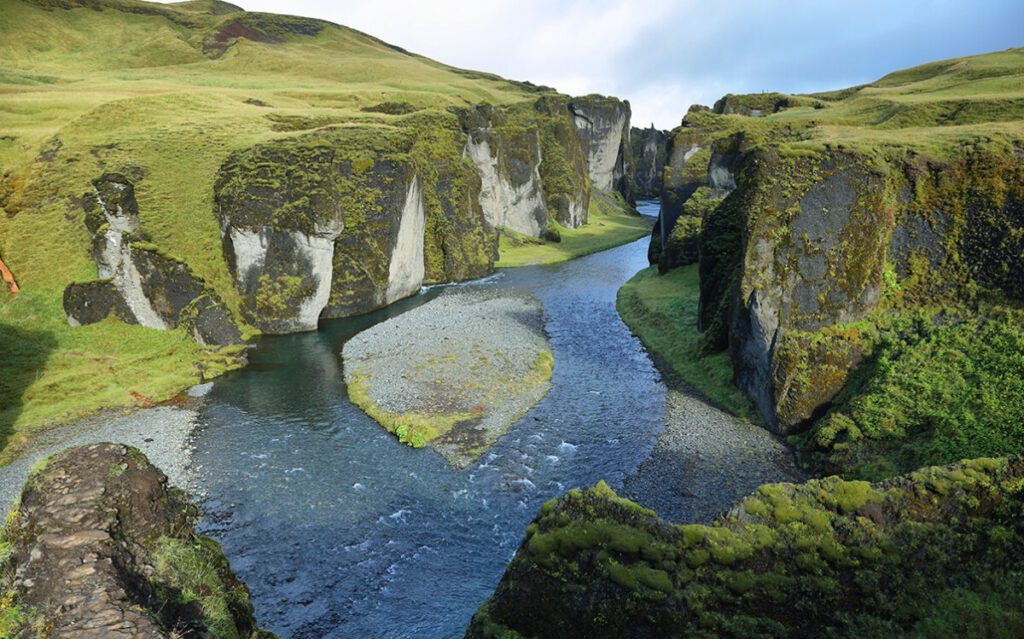
A combination of the fragile nature surrounding the canyon and the increased popularity of the falls located inside means that travel to this location is worth planning.
Unfortunately, authorities often close the paths, sometimes for months or years at a time, to allow for natural restoration and healing. Always respect these closures. We know it can be disappointing to plan a visit only to find it closed, but it’s better to let it heal for the next time around.
Múlagljúfur Canyon
Múlagljúfur Canyon is the Mules Canyon, and the trek out there makes you remember the name as you go.
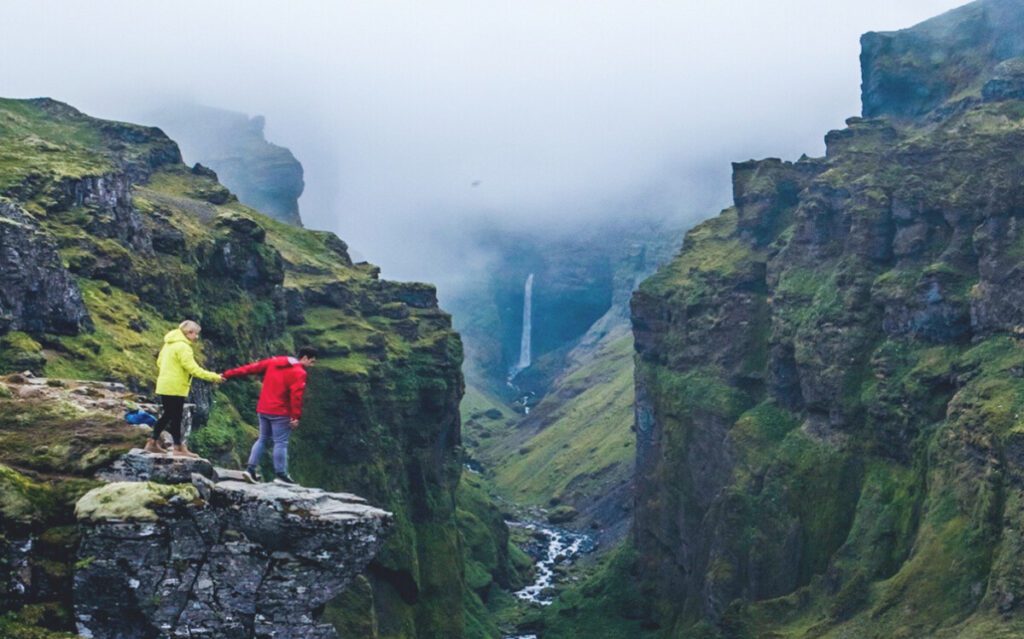
It’s not a difficult hike, but it’s still a 30-40-minute trek from the parking lot out to the canyon and the falls nestled within. The paths can be a little narrow, with loose rocks scattered throughout. Stick to summer unless you’re geared for slippery hiking, as the weather can make it more treacherous. There’s also a smaller waterfall tucked deeper into the canyon if you want to make the full trek. It’s beautiful, and you can easily spend the better part of an afternoon on that hike, so plan accordingly.
Svartifoss
Svartifoss is another of the more popular waterfalls in Iceland, but it’s not because it’s particularly large or powerful. Instead, it’s because of the spectacular natural geography surrounding the falls.
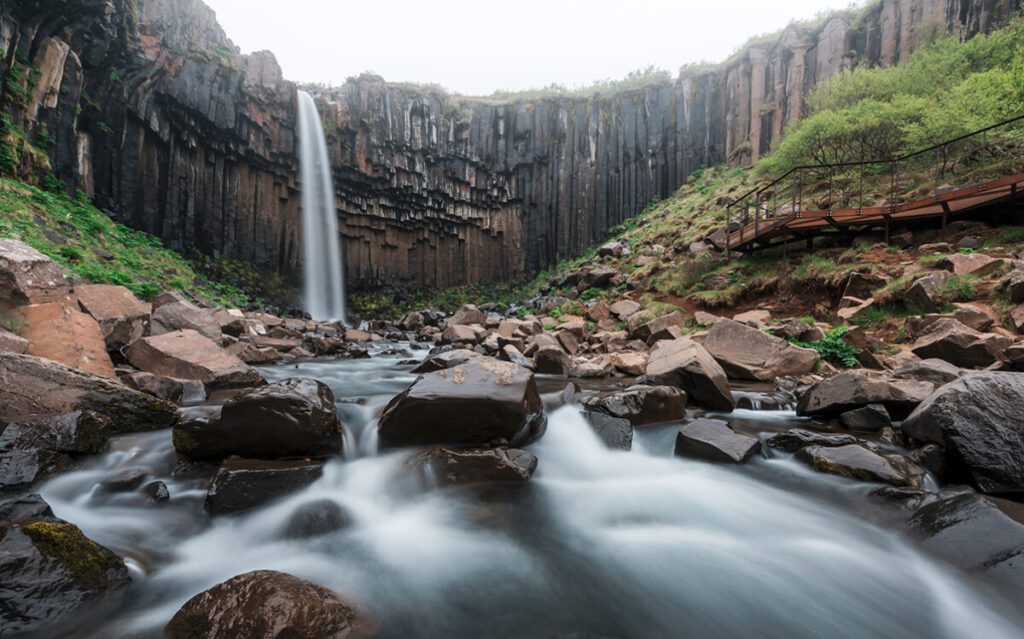
Svartifoss is located on a cliff of hexagonal rock columns, nearly black in color, giving the whole area an otherworldly appearance.
Reaching Svartifoss is easy, too. Following the ring road, once you pass the Skeiðará Bridge Monument and the road swings around towards the Svínafellsjökull Glacier, you’ll find the access road to the trails that lead you to the falls. It’s easy, beautiful, and well worth checking out.
Hengifoss
Hengifoss is a narrow fall tumbling over a broad-banded cliff, and it’s either the second or the third-highest waterfall in Iceland, depending on whether or not you count the falls in Morsárjökull Glacier.
Reaching Hengifoss is a bit more difficult and time-consuming than the other falls on this list so far.
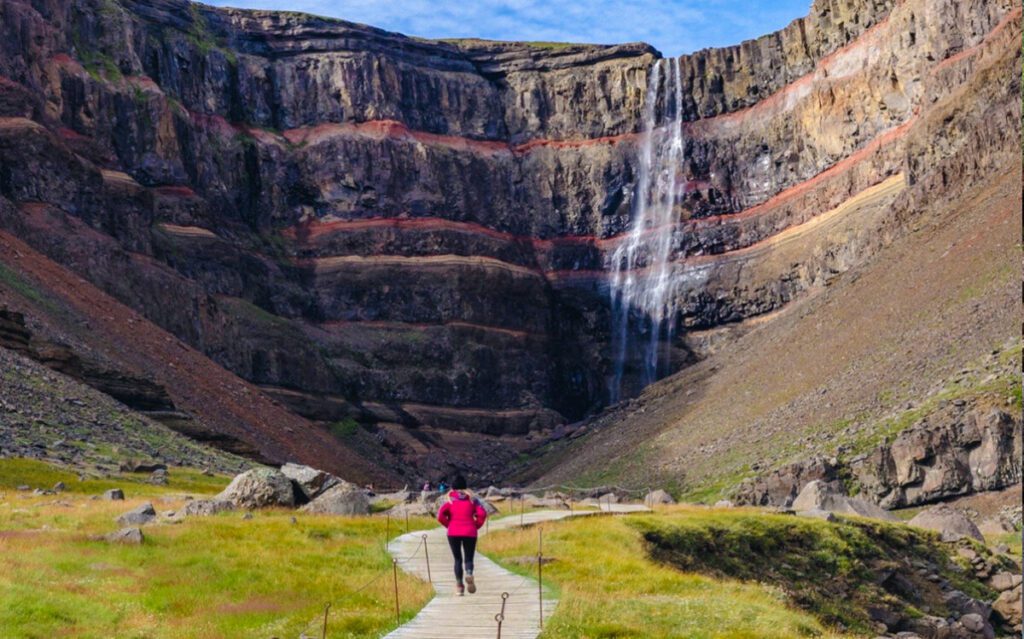
While it’s a great attraction, it’s some distance off the ring road, and the hike to reach it is around an hour long, depending on your speed. It’s also a long, gradual uphill trek, which can wear out many hikers by the time they reach the falls. At 700 km away from Reykjavik, this isn’t a simple day trip to visit.
Due to the steep angle of the cliffs hiding the falls, the best viewing time for this location tends to be the mornings, so plan ahead and arrive early.
Dettifoss
Dettifoss is a huge and powerful waterfall said to be the most powerful waterfall in Europe. If that’s not enough reason to visit alone, remember that it’s situated in the midst of the Vatnajökull National Park, the largest national park in the country. Everything here is well-protected and about as pristine as it’s possible to get, making it an incredible journey for any nature-lover visiting the country.
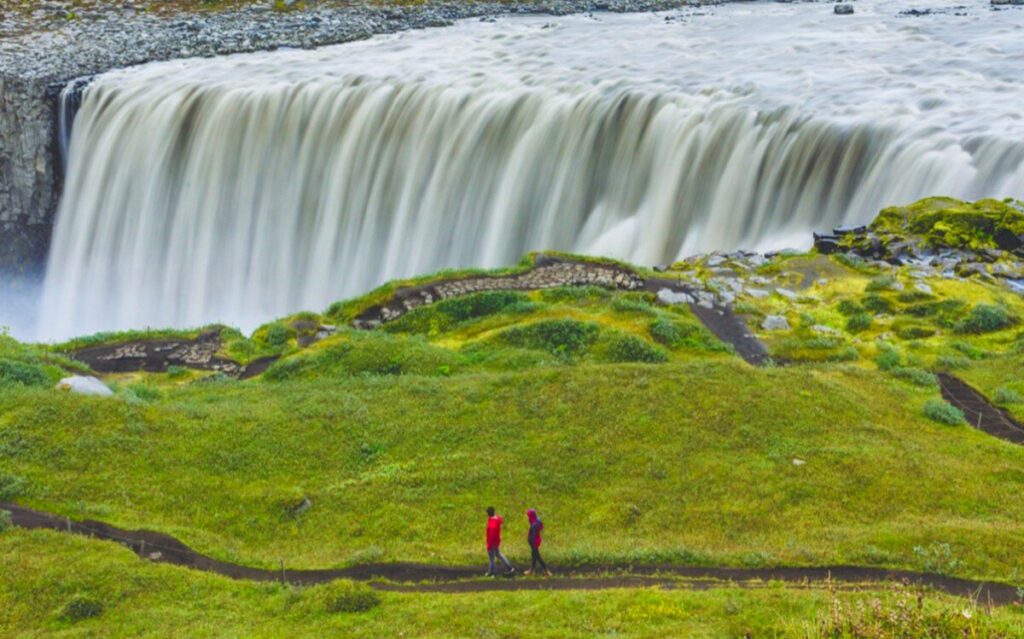
If that’s not enough, the same river system that feeds Dettifoss also feeds two other waterfalls, and you can easily see all three in the same trip. Selfoss, to the south of Dettifoss, is much broader but shorter than its cousin. Meanwhile, to the north and downstream of Dettifoss lies Hafragilfoss, another smaller cousin.
Goðafoss
Goðafoss is located just off the ring road in the far north of Iceland. Known as the “Waterfall of the Gods,” it’s said that in the conversion from the pagan Norse religion to Christianity, idols of the old gods were tossed into these falls as a symbol of change.
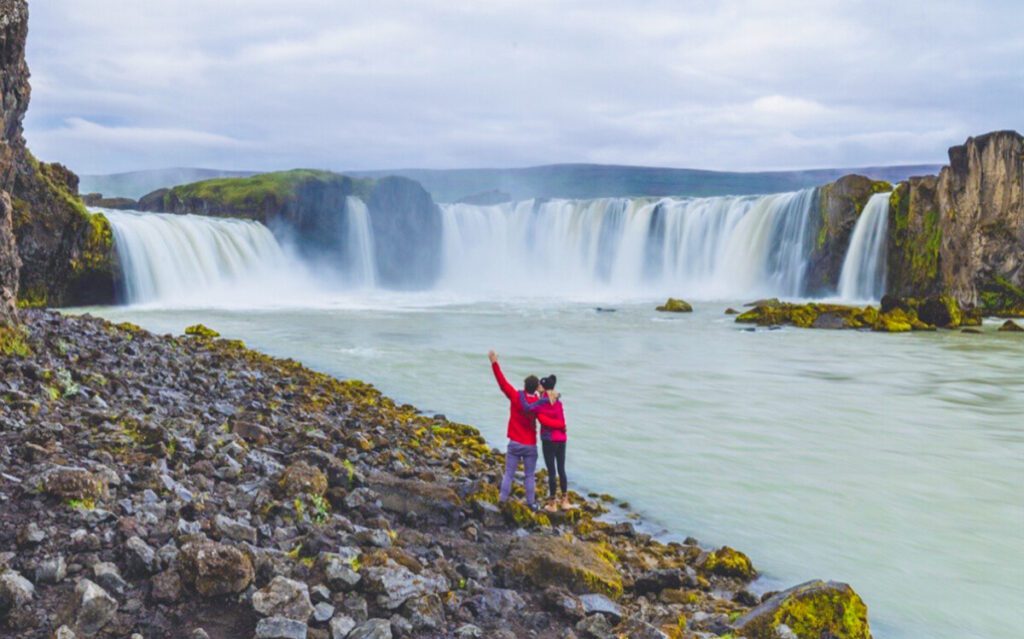
While perhaps not as exciting as a treasure chest, the reverence you can feel in these falls is unmistakable. They’re short, broad, and beautiful and can be easily reached from a home base in nearby Akureyri, the “capital of the north” and the largest non-Reykjavik settlement in Iceland.
Dynjandi Waterfall
Dynjandi is known as the jewel of the Westfjords, and with good reason. Where most of the falls on this list are tall, singular drops of thundering water, Dynjandi is a tumbling series of small cascades down a rough hill, where they finally pool and converge back into the river below.
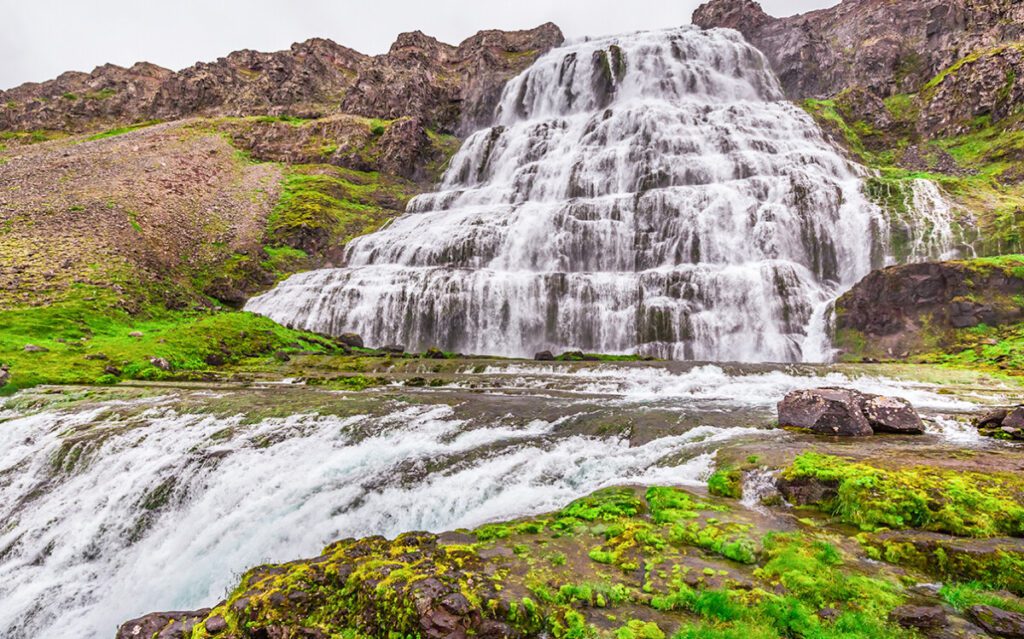
White waters resemble a bridal veil, from 30 meters wide at the top to 60 at the bottom.
In the area surrounding Dynjandi, there are six other waterfalls of varying sizes, all of which can be seen on a single trip and a relatively short hike.
A word of caution, though; located in the western fjords, the roads to reach these falls are rough.
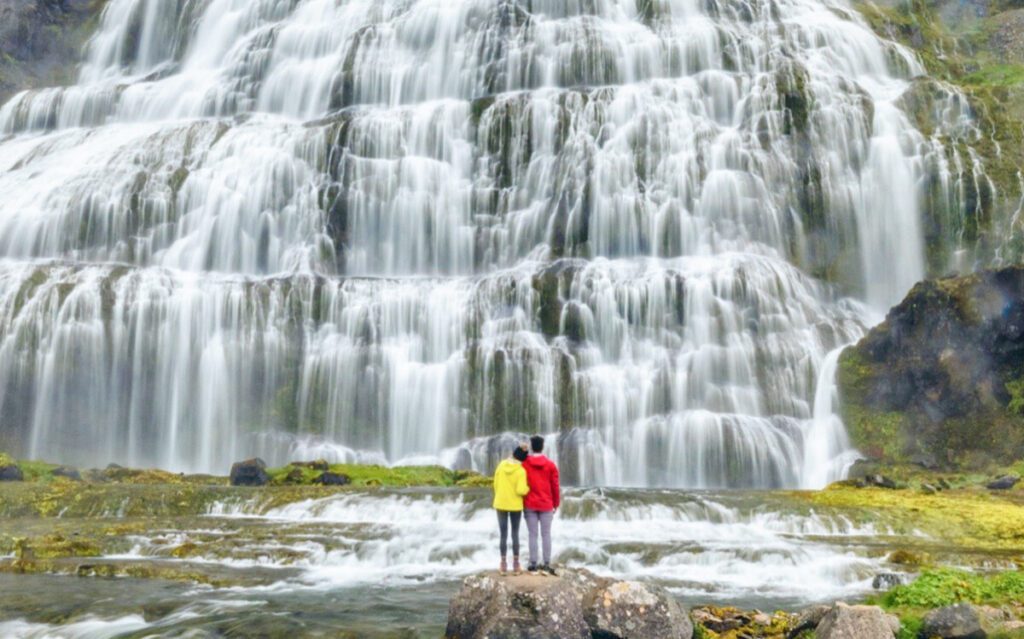
Make sure you bring a vehicle with high clearance and capacity to traverse rough terrain, or you risk getting stuck and derailing your whole plan.
Kirkjufellfoss
Kirkjufellfoss is one of the smaller falls on the list, and you aren’t likely to be terribly impressed by the waterfall if you visit Kirkjufellfoss on your waterfall tour of Iceland; it’s everything else that is breathtaking. Located to the north of Reykjavik and adjacent to the town of Grundarfjörður, the falls are in the shadow of the Kirkjufell mountain, a distinctly-shaped mountain often seen in media and pop culture.
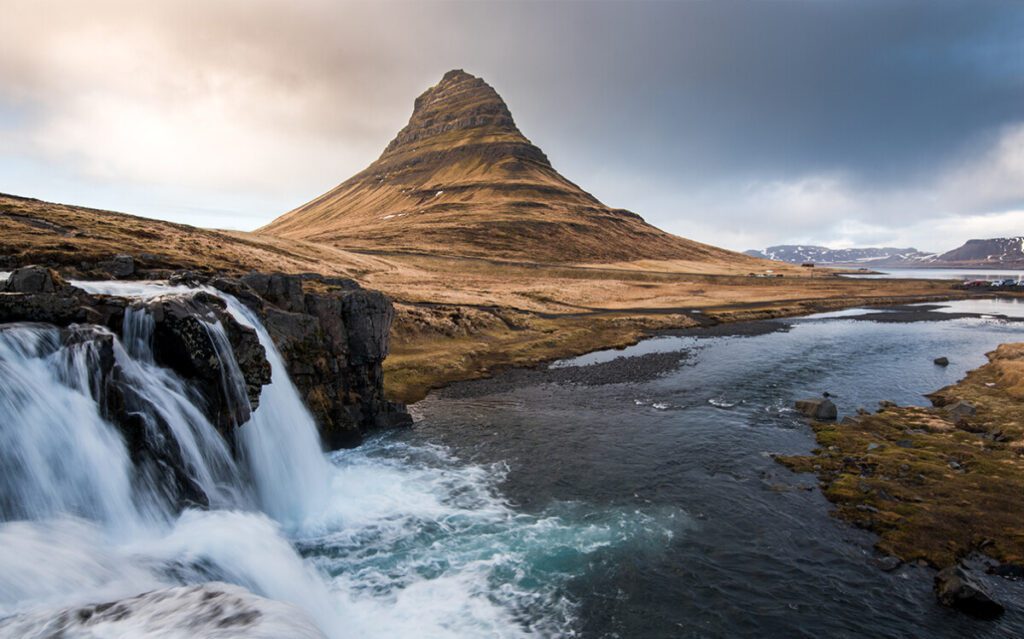
In fact, it’s said to be the most-photographed mountain in the country!
Glymur Waterfall
As Iceland’s second-tallest waterfall, these falls are a shining gem in the crown of Iceland.
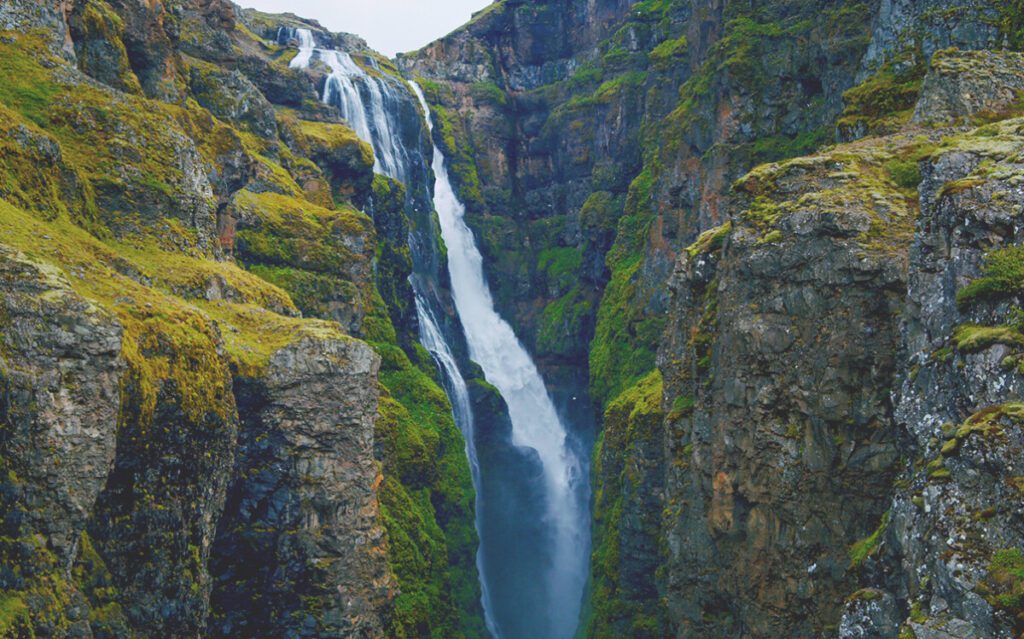
It’s not even just about the falls; the entire path to them is a hike that is some of the most fun hiking you can have, with just seven kilometers of trail to traverse. At just an hour away from Reykjavik, it’s easy to access and add to pretty much any trip to the country.
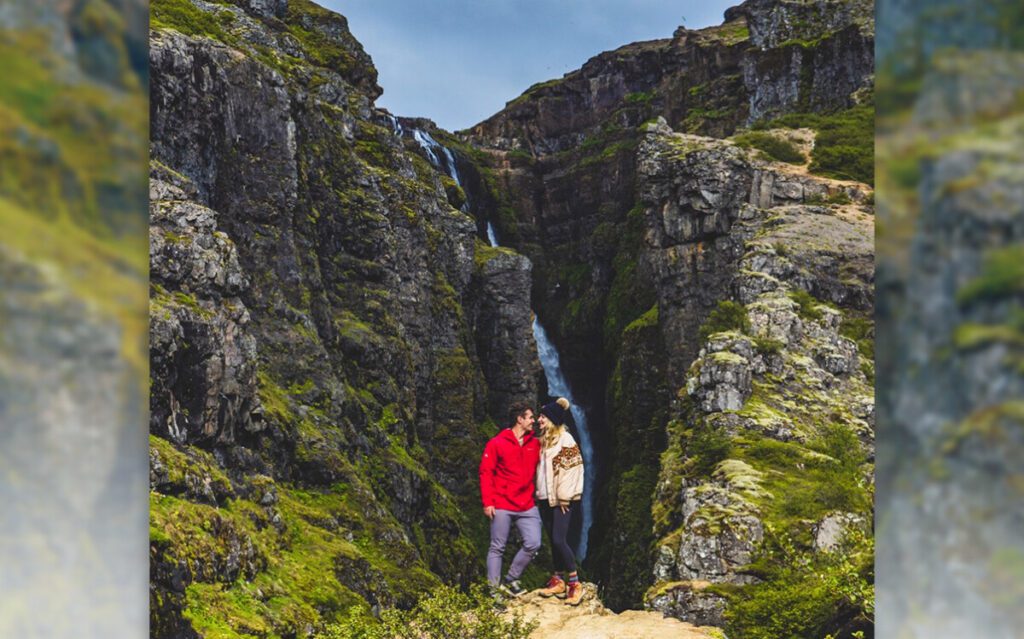
It’s not a simple hike, though; it’s steep and tricky to navigate. Make sure you have good hiking shoes, and stick to summer times; if there’s snow on the ground, it becomes a lot more dangerous to travel. There’s a simpler trail you can take, but it avoids the most scenic parts of the whole trip, so we really recommend the main hike.
Gullfoss
Last but not least on our list, the Golden Falls are very popular both because they’re uniquely spectacular and because they’re just two hours away from the capital. It’s actually a two-stage waterfall and is another of the more powerful falls in the country. Expect to get your clothes wet and enjoy the scenery!
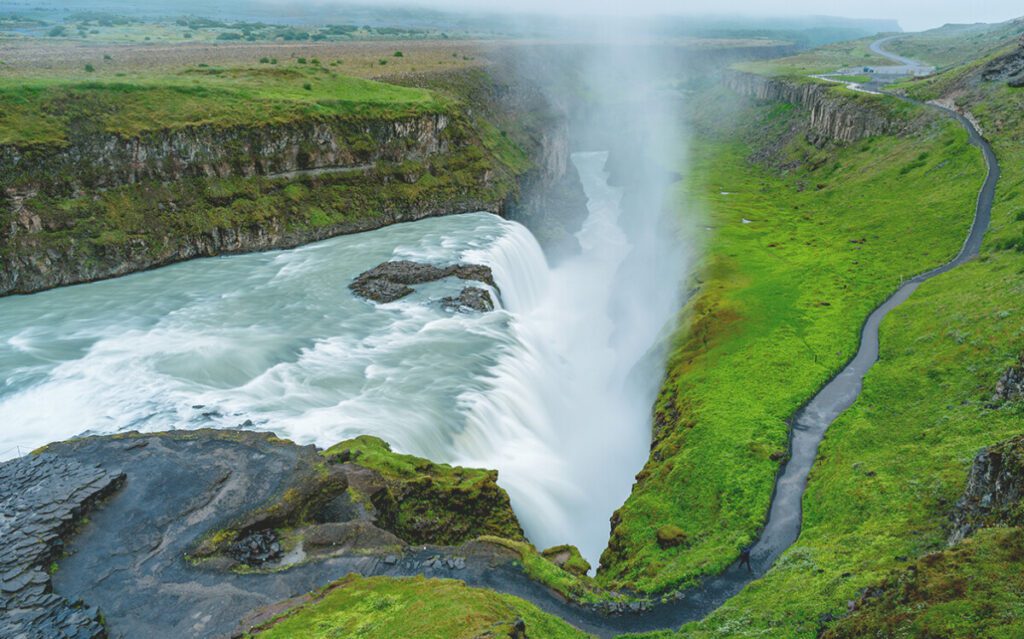
Of course, this handful of falls is just a drop in the bucket of the sheer number of falls you can see in Iceland. If you’ve visited one we haven’t, we’d love to hear you talk about it! Let us know in the comments about your trip, and who knows, maybe we’ll visit when we next go back to Iceland.
You may also enjoy:
